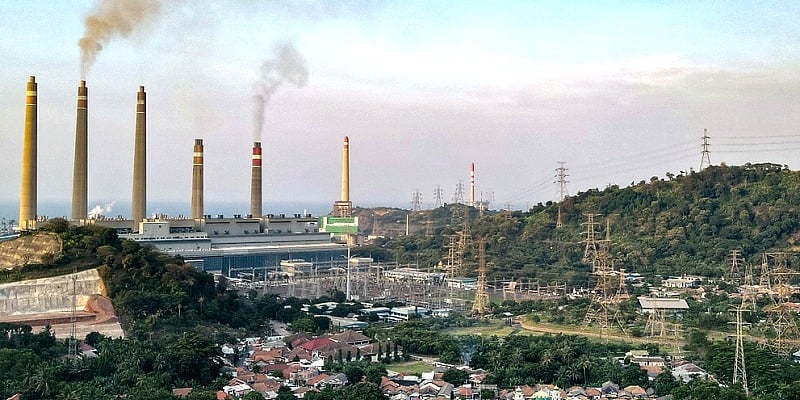Indonesia’s climate targets are “critically insufficient,” a global climate research consortium has said, despite the country’s renewed emission target.
Indonesia this year announced plans to reach net-zero emissions by 2060 and to reduce its carbon emissions by 31.89 percent independently or 43.2 percent with international assistance by 2030, in its updated Nationally Determined Contribution (NDC) submitted to the United Nations Framework Convention on Climate Change (UNFCCC) secretariat.
This is a slight increase from the 29 percent and 41 percent, respectively, outlined in the first NDC target submitted in 2016 and retained in a revised NDC last year.
The forest and land use sector in Indonesia is expected to be the largest contributor to its emissions reduction, accounting for a 25.4 percent reduction in overall emissions from the baseline figure or 729 metric tonnes of carbon dioxide equivalent.
The second largest is set to be the energy sector, accounting for a 15.5 percent reduction, or 446 metric tonnes of carbon dioxide equivalent, followed by waste at 1.5 percent, agriculture at 0.4 percent and industries at 0.3 percent.
Despite these changes, Climate Action Tracker (CAT) still rated Indonesia’s climate targets as “critically insufficient,” the same rating it gave to the country in September 2021 before the new targets were announced.
The critically insufficient rating is the worst of five ratings given. The other four are highly insufficient, insufficient, almost sufficient and compatible with the Paris Agreement’s safer global warming limit of 1.5 degrees Celsius.
If all governments were to put forth their targets and policies which had been rated critically insufficient, global warming would exceed 4 degrees Celsius by the end of the century, said CAT.
Institute for Essential Services Reform (IESR) executive director Fabby Tumiwa said recently that Indonesia should have set more ambitious targets as its enhanced commitment still relied on a “business-as-usual projection,” thus could still be easily achieved.

To be in line with the global ambition of warming to just 1.5 degrees Celsius, Fabby said, Indonesia’s emission level must reach its peak before 2030.
Carbon peak refers to the point in time in which greenhouse gas emissions will shrink in each following year, until it reaches emission levels deemed to be safe.
“There really isn’t much time left to push for more ambitious emission reduction actions and this is highly correlated with our adaptive capacity. The later we cut greenhouse gas emissions, the greater the risk of a climate disaster and the higher the impact,” Fabby said.
He added that Indonesia needed to carry out more ambitious mitigation in sectors that were dominant emitters, such as the energy sector and the forest sector, as well as land in order to achieve significant emission reductions.
IESR Climate Action Tracker coordinator Delima Ramadhani said Indonesia’s climate action status could be improved by ensuring that climate policies in this decade were implemented to fulfill a fair contribution based on global efforts.
The dominance of coal power plants, which were currently around 61 percent in Indonesia’s energy system, she added, needed to be significantly reduced to only 10 percent of coal power plants that did not use carbon capture and storage technologies in 2030 and that they must end their operations gradually until they stopped completely in 2040.
“Indonesia must increase climate commitments and international assistance so it can play a major role in implementing the coal cessation in accordance with the Paris Agreement,” said Delima.
An official at the National Development Planning Agency’s (Bappenas) environment directorate, Erik Armundito, was aware of the report. He said the government kept monitoring its actions to reduce greenhouse gas emissions.
The government, Erik added, remained optimistic that the country would reach net zero emissions by 2060 as it had started conducting simulations to make sure its target will be achieved.
“According to the latest simulation, this scenario will bring Indonesia to reach the level of absolute emission [reduction] equivalent to 360 megatons of CO2 in 2050 before finally reaching net-zero emissions in 2060,” Erik said.
Absolute reduction refers to the total quantity of greenhouse gas emissions being emitted, whereas intensity compares the amount of emissions to some unit of economic output.
ADVERTISEMENT
ADVERTISEMENT








































